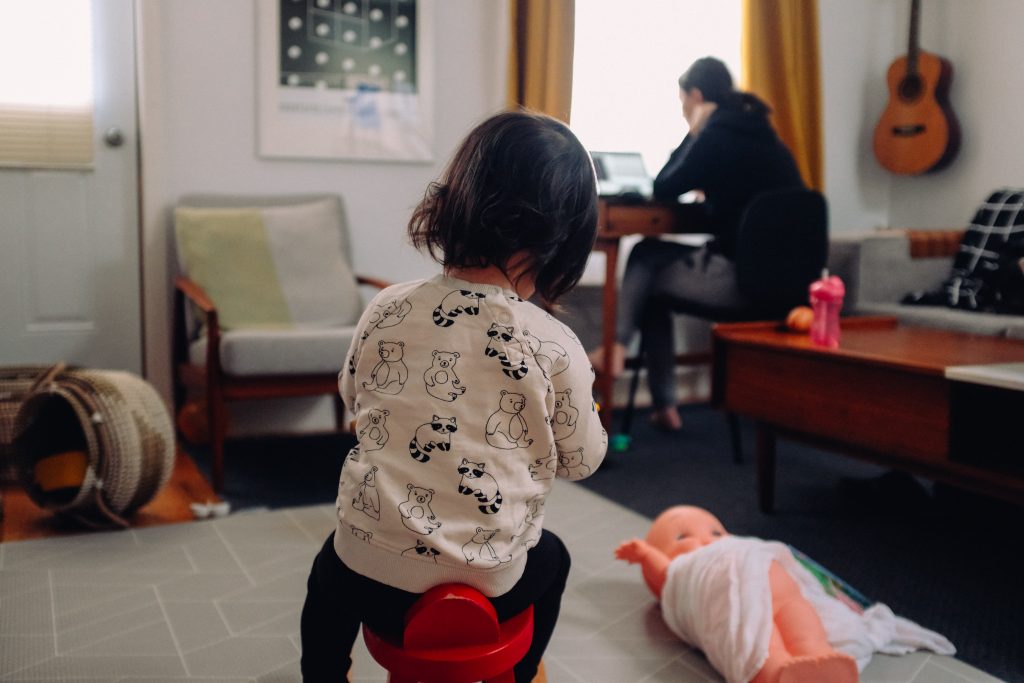It does not come as a surprise that, as the consequences of the COVID-19 pandemic on the economic and social wellbeing of the population are starting to be elucidated, the potential for differential effects by sex are put on the table. This gender lens is particularly relevant from the integral human development perspective, which is deeply concerned with the most vulnerable members of the human family and dynamics of cumulative disadvantage. One of the areas of agreement between the different groups analyzing the consequences of COVID-19 from a gender perspective is that women are particularly disadvantaged because, worldwide, they spend more time on housework and care than do men.
Furthermore, the time that women spend on these activities is associated with the presence of young children and ill people in the household. One consequence of this, it has been argued, is that the COVID-19 lockdown—with its implications for keeping children out of daycare and school, adults working from home, and those with minor symptoms being treated at home—will disproportionately affect women and their work productivity.
These claims are widely supported by evidence that shows the average number of hours that men and women spend on care and housework throughout the world. Given these broad numbers, it is reasonable to ask: what exactly might be the effect of the lockdown on the time that the population allocates to housework and care, and who bears the burden?
Examining the data
A precise answer to these questions requires longitudinal time use data with measurements before and after the pandemic. In the absence of these, analysis of the latest time use data throughout the world may shed light on the possible implications of children staying at home and the presence of ill household members on men and women’s time use distribution. I decided to explore this further in early April through my role with the Pulte Institute for Global Development.
To start this discussion, I analyzed the data from the Mexican Time Use Survey (ENUT) 2014, to explore how the average time that men and women who are a household head or a spouse of a household head spend on housework, care, supervision, paid employment, sleeping and leisure in each of the following three situations:
- When there are children 3 to 4 years old in the household who are not attending daycare (as opposed to households where all children 3 to 4 years old are in daycare);
- When there are adolescents 14 to 18 years old in the household who are not attending school (as opposed to households where all adolescents are in school);
- When there are ill individuals in the household.
This analysis shows that, of the three situations analyzed, the presence of ill household members is the one that has the largest effect on the time that women and men spend on housework and care. When there are ill individuals at home, women increase their time spent on care from 8.0 hours to 18.8 hours per week—nearly a part-time job. In addition, women with ill household members spend a staggering 45.6 hours per week on housework (45.0 when there are no ill individuals in the household). With that total workload in care and housework activities, it is not surprising that, with the presence of ill household members, women decrease their time in paid employment from 21.8 hours to 17.8 hours. Self-care also becomes a low priority for women in these situations, as they lose an average 4 hours of sleep per week and almost 2 hours on leisure.
Men also increase the time that they spend on care and housework when there are ill individuals in the household, but this increment is only half that of women (4.9 hours per week, to end with a total of 8.1 hours). As is the case with women, this increased workload results in men losing hours of sleep.
Out-of-school children also increase the time that women spend on housework, while simultaneously decreasing women’s time in paid employment and increasing the time they sleep. Interestingly, the time that women spend on care for their out of school children decreases by 1.4 hours per week, but this may be the result of having to spend less time doing homework. However, we can reasonably expect this to be different with COVID-19, where children’s school responsibilities are transferred to the home. Contrary to the case where there are ill household members, men’s time spent on housework or care does not change with out of school children. This is further indication that the largest burden of regular care responsibilities falls to women.
Data vs reality
This analysis provides empirical support to the idea that women bear a disproportionate share of the increased housework and care burden brought in by the lockdown, and that this may have negative consequences on their employment, stress levels and mental health. Nevertheless, while my results show that ill household members and out-of-school children increase women’s time in care activities, the actual magnitude of these effects during the pandemic may not be known unless we collect data on time use during the lockdown or immediately thereafter.
The lockdown has all children (be they enrolled at school or not) at home, and has transferred a good portion of school hours and responsibilities to the household. The consequences of this is not something that can be seen in regular time use surveys, unless conducted specifically for this situation. Another thing that may change with the lockdown is that, as unemployment increases, the income dynamics and household distribution of work changes. With more household members being laid-off because of the lockdown, those who keep their jobs—women included—may need to work extra hours. Consequently, the conclusion that women’s time in paid employment decreases with an increase in care requirements may not necessarily hold in this particular context. Instead, women may see their total work hours increase even more, and their sleep and leisure time run very thin.
Balancing the load
These uncertainties do not retract, however, from the general conclusion that, as the positive cases of the novel coronavirus move into the millions, policy makers, employers, and the general public must be aware of the increased weight that the pandemic is likely to place on women’s time. Unfortunately, this is also an opportunity to call attention to the persistent inequalities of the distribution of household and care work in many homes across the globe, and for the need for policies, interventions—such as subsidized child care and paid parental leave for men and women – and behavior change communications that help to change these social norms.
It is also an occasion to point to the need to further research how families respond to this particular situation in different contexts. The analysis of existing data points to the possibility that women bear a disproportionate load of the lock-down, and that this further affects their current and future conditions. It is our responsibility, as advocates of the Integral Human Development vision, to provide decision makers with information that can help decrease these pervasive effects.
Estela Rivero is a research associate within the Pulte Institute for Global Development‘s Evidence and Learning Division. A social demographer by trade, Rivero specializes in the formulation and implementation of research studies aimed at improving social interventions and programs. In her more than 15 years of experience, she has worked in international research organizations, the academy, and social consultancy firms. The Pulte Institute for Global Development is an integral part of the Keough School of Global Affairs.
This article is part of a series of blog posts published by the Keough School of Global Affairs. Dignity and Development provides in-depth analysis of global challenges through the lens of integral human development.


